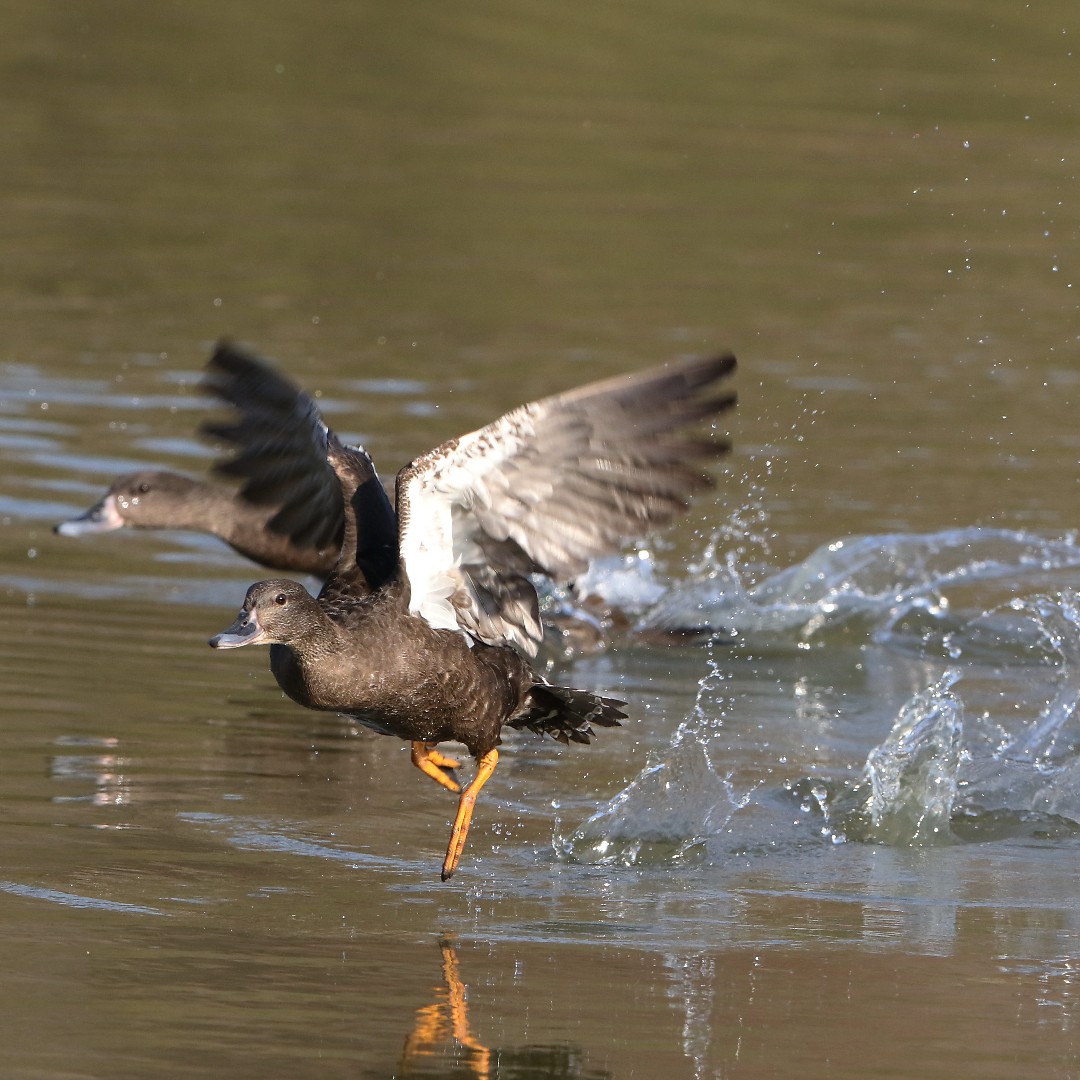African Black Duck
A species of Anas Scientific name : Anas sparsa Genus : Anas
African Black Duck, A species of Anas
Botanical name: Anas sparsa
Genus: Anas
Content
Description General Info
Description
The African black duck is a black duck with pronounced white marks on its back, a dark bill, and orange legs and feet. A purpish-blue speculum is often visible, especially in flight. It lives in central and southern Africa. It is also known as the black river duck, or (A. s. leucostigma) West African black duck or Ethiopian black duck. It is a medium-sized duck, length 48–57 cm, with the male the larger. 
Size
58 cm
Nest Placement
Ground
Feeding Habits
African Black Duck consumes a varied diet including larvae, pupae, aquatic animals, plants, seeds, small fish, snails, and crabs, foraging primarily under rocks in waterways.
Habitat
The african Black Duck typically inhabits secluded, shallow, fast-flowing rivers and streams, often found in mountainous and wooded regions. It also frequents more open areas, adapting to slower-moving waters in lakes, lagoons, and reservoirs. Occasionally, it can be spotted in man-made environments such as sewage ponds across broader geographical regions within Africa.
Dite type
Omnivorous
General Info
Feeding Habits
Bird food type
Behavior
It is a very shy and territorial duck. It is usually seen in pairs or small flocks. It breeds throughout the year in different areas. Incubation is about 30 days by the mother and the fledgling period is 86 days and only the mother takes care of the young. Their egg quantity ranges from 4 to 8 eggs. 
Distribution Area
The African black duck is mainly found in eastern and southern sub-Saharan Africa from South Africa north to South Sudan and Ethiopia with outlying populations in western equatorial Africa, in southeast Nigeria, Cameroon and Gabon. 
Species Status
Not globally threatened.
